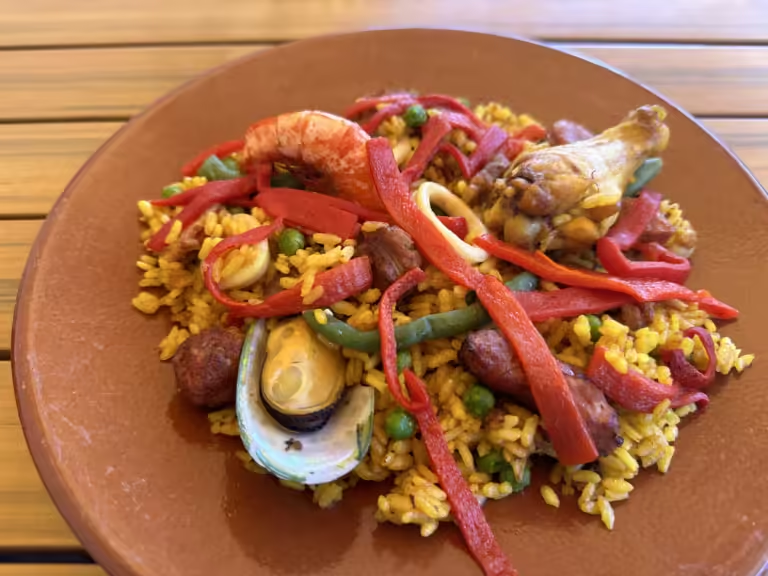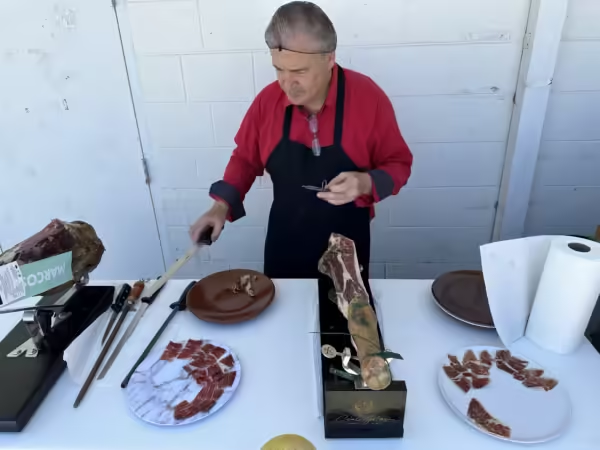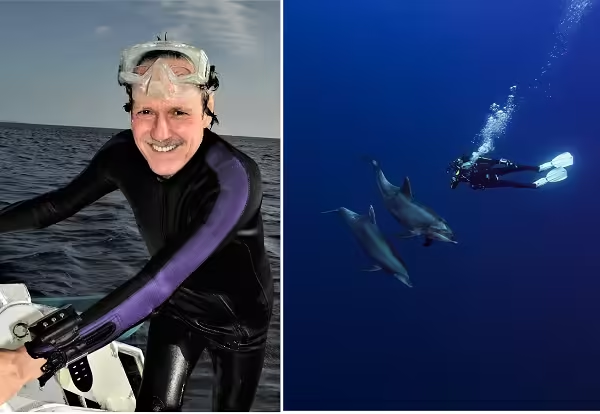Amazon’s Carbon Footprint Grows Despite Climate Pledge Commitments
Five years ago, in September 2019, Amazon splashily announced the Climate Pledge — a commitment to achieve net zero carbon emissions by 2040, a decade before the Paris Accord’s 2050 goal. It was a bold declaration, even if it took almost a year of intense activism by Amazon Employees For Climate Justice to bring it about. Still, it made Amazon seem like a genuine climate leader, a theme it continues to push as part of its brand.
But a new report, “Prime Polluter,” from the Ship It Zero coalition and partners finds that Amazon is wildly off track: its carbon emissions have grown by 18% annually since 2019, with key sectors dramatically higher: U.S. air freight pollution increased 67% from 2019 to 2023 to become Amazon shipping’s largest single carbon factor, while delivery van emissions grew over 190%. Similar to the Port of LA, two key underlying problems are a lack of transparency and a lack of interim goals and timetables. Together, they reflect a corporate culture lacking in accountability — even as Amazon continues to tout its image as a leader.
“It doesn’t have any interim reduction targets to get there [its 2040 goal],” said Ship It Zero spokesperson Erika Thi Patterson, “So it’s of course going to struggle to make significant headway without those clear, interim benchmarks.” Patterson is the senior director for Pacific Environment’s Climate Campaign. Other report partners include Stand.Earth and its research group, and Clean Mobility Collective. “This is a company that is just moving in the wrong direction when it comes to climate,” Patterson told Random Lengths.
Although Prime Polluter takes a comprehensive look at Amazon’s transportation carbon footprint, it doesn’t deal with the carbon footprint of the products Amazon sells, or with Amazon’s data centers — whose energy demands are skyrocketing, not least due to the questionable AI boom. So if anything, the report understates the climate problems Amazon is responsible for.
Indeed, Amazon’s latest “Sustainability Report,” issued in July, dramatically claimed that it had reached the goal of 100% renewable energy for all of the electricity its operations used in 2023 — seven years ahead of its 2030 goal, an astonishing accomplishment if only it were true. But instead of counting the energy Amazon actually used, it relied heavily on purchased renewable energy credits (RECs), which can cost as little as 1% or less of the actual energy used. Companies buy RECs to claim credit for zero emissions instead of tallying the actual emissions associated with the electricity purchased off of their local grids. But their representation is only realistic if they lead to investment in new capacity, are purchased in the same grid area, and represent energy available at the time of use. Looking realistically at where its data centers were located, a July report from Amazon Employees for Climate Justice, or AECJ, “Burns Trust: The Amazon Unsustainability Report,” concluded that on average, “Amazon is using only 22% renewable energy across the US,” and it cited specific examples of Amazon data centers in Oregon and Virginia that were actually increasing fossil fuel demand.
“They’re making this bold claim of 100%, which makes it seem like the work is done, they completed this project,” an AECJ member who’s a software development engineer told Random Lengths. “They didn’t say 98 or 99%, they said, ‘100%. We’re good on this.’ It’s just another place where it’s clearly a PR spin and the energy is not really coming from renewable energy sources.”
But Prime Polluter’s focus goes to the heart of what Amazon is known for, as well as what affects the Harbor Area most directly. The delivery van data — a 190% increase — is particularly troubling, set against Amazon’s touted plans to buy 120,000 electric vehicle vans by 2030, which wouldn’t even cover one-third of its projected deliveries then. It’s a sobering benchmark for Amazon’s performance overall: this is the one part of its transportation system where a mature zero-emission technology exists, yet Amazon has no intention to fully deploy it, despite its enormous purchasing capacity.
“Amazon’s existing deployments of electric vehicles only handle portions of the trip for roughly 2% of packages delivered in last year,” a figure that “is really not meeting the mark,” Patterson said. “Seeing these kinds of emissions really underscores that they have not made progress since making that climate pledge.”
While delivery vans represent a ripe opportunity being under-realized, air freight represents the opposite extreme: putting a lot of eggs into the wrong basket, with emissions up 67%, as noted above. “It really reflects a deliberate decision by Amazon to bypass emissions reduction initiatives with an increased aviation focus,” Patterson said. “Last year, air freight generated more than 42% of the carbon emissions of an Amazon package’s journey,” making it the largest single contributor.
As the report explains, “Carbon-intensive air freight cargo is the linchpin to Amazon’s one-day delivery offerings. Through its Amazon Air operations, the company has created the conditions for competition on delivery speed, which is terrible for the climate and suggests a lack of seriousness about tackling emissions.”
Significantly, there is no zero-emission plan or pathway for air freight. Rather, the federal government’s plan for “sustainable aviation fuel” calls for “Achieving a minimum of a 50% reduction in life cycle greenhouse gas emissions compared to conventional fuel,” and replacing all conventional fuel by 2050. So that plan is both long-term and sub-optimal. Amazon is a member of the Sustainable Aviation Buyers Alliance — a typical example of how it signals climate leadership, with no measurable framework for evaluating its value, neither a timetable for tracking progress nor an end target compatible with staying within the 1.5°C increase window.
As the report notes, “A real solution would require the company to transition to less carbon-intensive ground and maritime shipping while making significant investments in rapidly scaling up fossil-free, zero-emission solutions for ocean and ground freight transportation.”
But Amazon’s progress on ocean and ground freight decarbonization is also woefully inadequate. On the ground, “Heavy duty truck emissions grew by 51%” from 2019 to 2023, Patterson said. “Heavy duty trucks comprise the second largest share of U.S. dock-to-door emissions, with 37% of each package’s carbon output.” The report notes that “To date, Amazon has made no promises to reduce its dependence on fossil-fueled trucks … Amazon’s inaction on the electrification of its heavy-duty trucking fleet is a massive threat to real climate progress in the remaining years of this critical decade.”
AECJ’s Burns Trust report goes into greater detail regarding the one sub-optimal effort Amazon is making: investing in future “e-fuels” that combine captured CO2 with hydrogen sourced from renewable electricity. But, it notes, “Since these ‘e-fuels’ use captured CO2 from smokestacks, it’s only temporarily delaying when that carbon pollution is released, not eliminating that pollution. When the e-fuels combust, they release carbon pollution the same as conventional fuel.” The report also notes that e-fuels convert “at best half of the energy in the electricity into liquid or gaseous fuels,” according to a 2020 report from the International Council on Clean Transportation. So it’s a flawed transitional technology at best, not a long-term zero-emission solution.
As far as shipping goes, we see the same pattern of high-profile signaling, without tangible, measurable substance. Amazon is a founding member of Cargo Owners for Zero Emission Vessels and the Zero Emission Maritime Buyers Alliance, “So that’s great that they’re signaling to the industry by joining these initiatives, that it’s a priority.” Patterson notes. “However, Amazon performed very poorly in terms of near-term implementation,” she said, referring back to her earlier comment about the lack of interim commitments.
What’s more, the 2040 goal “falls short of what is needed to address the urgency of the climate crisis and to cut pollution in portside communities, which are predominantly low-income communities of color,” she noted. “Not only has Amazon not been on track to meet that goal, but it’s a full decade later than where we need. … We need to drastically and urgently decarbonize the shipping sector by 2030 to keep global warming below 1.5°C because that will push us past the brink of irreversible climate chaos.”
As critical as the Prime Polluter report may be, it comes from a civil society position of encouraging transportation partners to do better. In contrast, Amazon Employees for Climate Justice fought Amazon’s management for almost a year, in what Scientific American called “probably the first labor dispute in history triggered by climate change,” before the surprise announcement of its Climate Pledge on the eve of a worldwide walkout.
As often happens, that organizing experience gave AECJ a much more critical view of Amazon’s operations than most outsiders have. For example, Amazon tried to derail its efforts with an earlier, narrow commitment, Shipment Zero, a promise to make 50% of its shipments net zero carbon by 2030. Initially presented as so good it should negate the need for anything further, it was later quietly dropped as superfluous, with Amazon claiming “it no longer made sense to have a separate and more narrow Shipment Zero goal that applied to only one part of our business.”
In response, Will Evans, the journalist who called attention to the move, tweeted, “Never mind that interim concrete goals are crucial in this world of far-off vague promises.” So, in four years, it went from being a panacea to an irrelevant distraction — a typical up-close example AECJ has seen of how Amazon’s rhetoric and actual practices diverge. Dropping Shipment Zero is the exact opposite of what they and other climate activists are asking for: developing and sticking with concrete, specific measurable goals with timetables and milestones to ensure progress stays on track.
“We really want to point out how much effort goes into PR to hide the fact that Amazon is actually expanding its fossil fuel use, both in transportation and also on the data center side,” said Eliza, another AECJ member who no longer works at Amazon. “This past summer both Microsoft and Google have said that their emissions are going up as a result of building out new data centers for the boom in AI. Amazon is doing the same thing, but Amazon is saying that their emissions did not go up,” she noted. “Do you really think that Amazon is doing much better than Microsoft and Google? No. It all comes down to the way that Amazon calculates these numbers.”
As an example, she highlighted Amazon’s largest data center hub in Virginia which has a very dirty grid — “as poor as 7% renewable energy,” according to AECJ’s report. The utilities there “have actually said that they are having to delay the retirement of their coal plants and build out new natural gas plants because of the increase in electricity demand, which are primarily data centers,” she said. In addition, “Last year, Amazon killed clean energy legislation in Oregon that would have required data centers to be held to the same renewable energy standards as utilities.”
Amazon is also fighting environmental legislation and regulation here in Southern California, particularly related to its warehouse operations and developments, as revealed in an eight-page internal “Community Engagement Plan” leaked to the Warehouse Worker Resource Center last December. Summarizing its PR success in influencing the public, it wrote, “While we faced headwinds around site delays, subleases, cancellations, and labor organizing efforts in San Bernardino, Ventura, and Riverside Counties none of our community partners or elected leaders amplified or engaged with those efforts.” In 2023 Amazon “provided over $3.5 million in sponsorships to over 175 organizations” and “generated 110 positive media mentions and had 14 policymaker quotes.”
“That strategy that Amazon outlines in that memo is not unique to the inland Empire, but of course, the inland Empire is hugely important,” Eliza said. ‘That playbook is to basically use PR and use community donations, use donations to local politicians, to really smooth the way and fight against labor organizing and fight against environmental justice organizing, and that is the same playbook we see Amazon use throughout the company. It’s about using PR and using small donations to shield against criticism of what the company is doing.”
“There’s a very proven track record that Amazon’s leadership’s priority, the way that they make decisions, is totally out of sync with a more equitable and more sustainable future,” the software engineer said. “The way that we can push those decisions to be made differently is to shine a light on the things that they are doing that are not truthful, and just really highlighting that discrepancy between what they say and what they do. Because actually, if they were doing the things that they said they were doing that would be really great.”

















